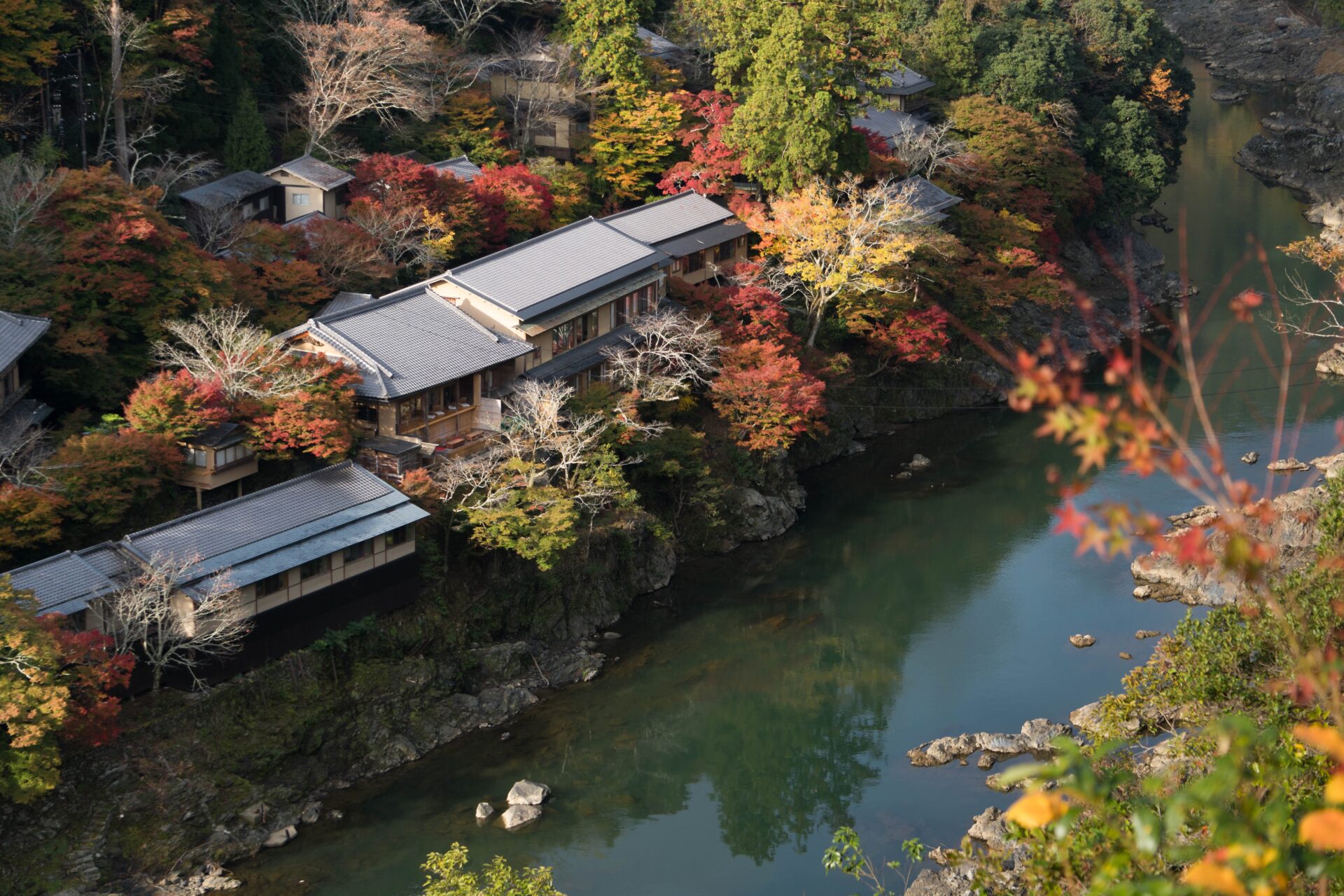You are probably quite familiar with Kyoto city’s highlights such as Geisha district Gion, the red torii gates of Fushimi Inari, and the bamboo grove of Arashiyama. But did you know that Kyoto is also a prefecture, and that this area is chock-full of hidden gems for those who like to get away from the crowds? Especially if you are looking for a beautiful natural environment with interesting cultural attractions, Kyoto prefecture is a great destination to add to your itinerary. Some of these places make for a great day trips whereas others require a bit more travelling and are worth an overnight stay. Check out the selection we made of some of the best hidden attractions in Kyoto prefecture!
- 1. A traditional view in Yawata
- 2. One-of-a-kind temples in Uji
- 3. Amanohashidate – The Bridge in Heaven
- 4. The boat houses of Ine
- 5. Ayabe Onsen hot spring in nature
- 6. A boat ride on the Hozu River
- 7. A Thatched Village in Nantan’s Miyama district (Kayabuki-no-Sato village)
- 8. Green Tea Fields in Wazuka
- 9. Hiking the Yamashiro Kodo
- 10. Tranquil Temples in Kizugawa
- 11. Bamboo and Art in Otokuni
- Traveling around Kyoto
- Other articles you might enjoy
1. A traditional view in Yawata
Yawata City (八幡市) and Kumiyama-cho are connected by the Kozuya Bridge, which spans the Kizu River and is known as Nagare-bashi bridge. It is the longest remaining wooden bridge, with a total length of around 356.5 meters, and was built in 1951. Because there are no utility poles or concrete structures around the area (rare in Japan!), the bridge is a popular location for cosplay. The area is also a year-round recreation zone throughout the holidays, where families and young people enjoy barbecues, sports, and other activities.
Around the Iwashimizu-Hachimangu Station you can see a number of traditional buildings, enjoy a panoramic view of the city from Otokoyama Observatory and visit some beautiful shrines and temples. Iwashimizu Hachimangu Shrine is an ancient shrine located at the top of Otokoyama and worth a visit.
Travel time from Kyoto Station: 30 min by train
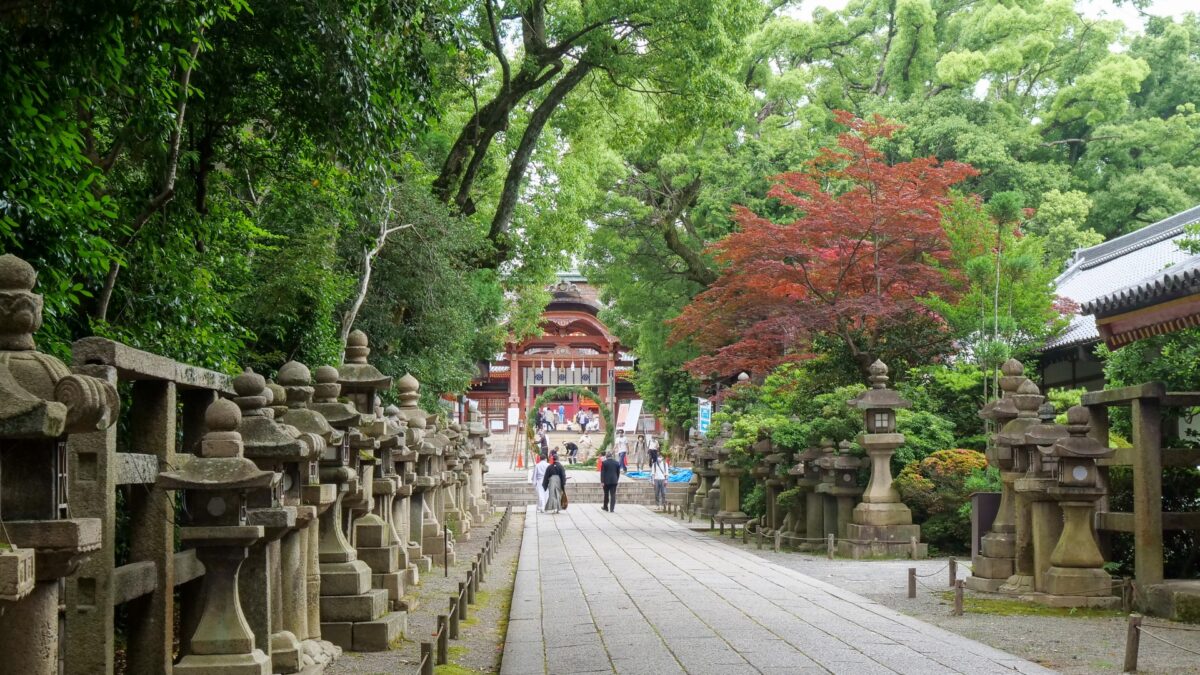
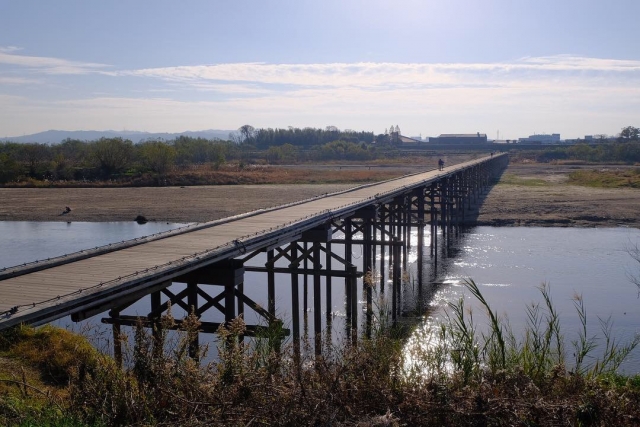
2. One-of-a-kind temples in Uji
The small village of Uji (宇治) is a popular stop for local tourists on the way to the famous former capital Nara. Uji is worth a stop for several attractions, with the most well-known being the Byodoin Temple and the tea fields.
If you’d like to venture off the beaten path between July and mid September, you should stop by the Shoju-in Temple (正寿院). During the warm summer months, Shoju-in boasts over 2,000 wind chimes called furin that, according to the locals, will help you feel cooler with their clean and clear sounds. But also in the other seasons it is a beautiful place to visit.
Another hidden gem in Uji is the Obakusan Manpukuji temple (黄檗山萬福寺), which is known as ‘the greatest Chinese-style temple in Japan’. Manpuku-ji was built of Sumatran teak and is an extremely unusual Japanese temple because it has been preserved almost exactly as it was when it was erected, and the majority of the buildings have been classified as Important Cultural Properties.
Travel time from Kyoto Station: 18 min by train
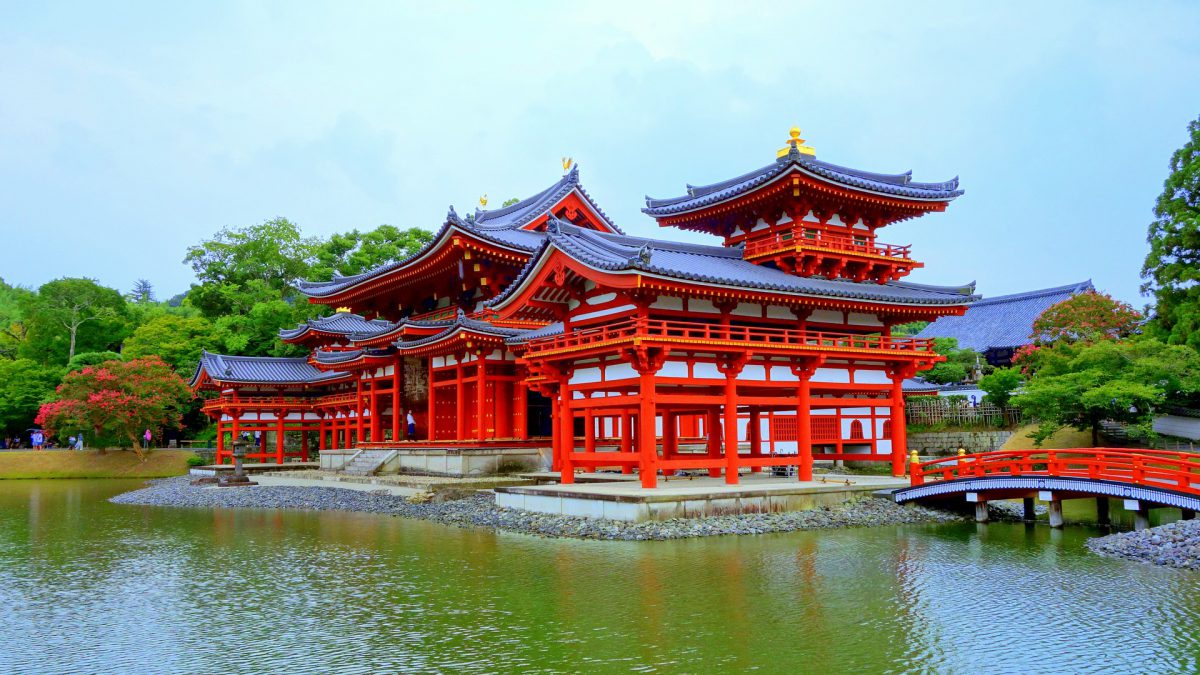
3. Amanohashidate – The Bridge in Heaven
Amanohashidate (天橋立), literally meaning ‘bridge in heaven’ is a pine-covered sandbar in northern Kyoto Prefectures’ picturesque coastline region. The Amanohashidate Sandbar appears to be a road between heaven and earth when viewed from the mountains on each end of the bay. The view is considered one of Japan’s three most beautiful scenic views.
At each end of the sandbar, several other sites can be visited on foot or by renting a bicycle. A few sanctuaries, a little amusement park, and observation decks are among the attractions. Visitors can also enjoy the sand beaches along the sandbar or go on sightseeing boats around the bay.
Travel time from Kyoto Station: 2h15m by train / 1h45m by car.
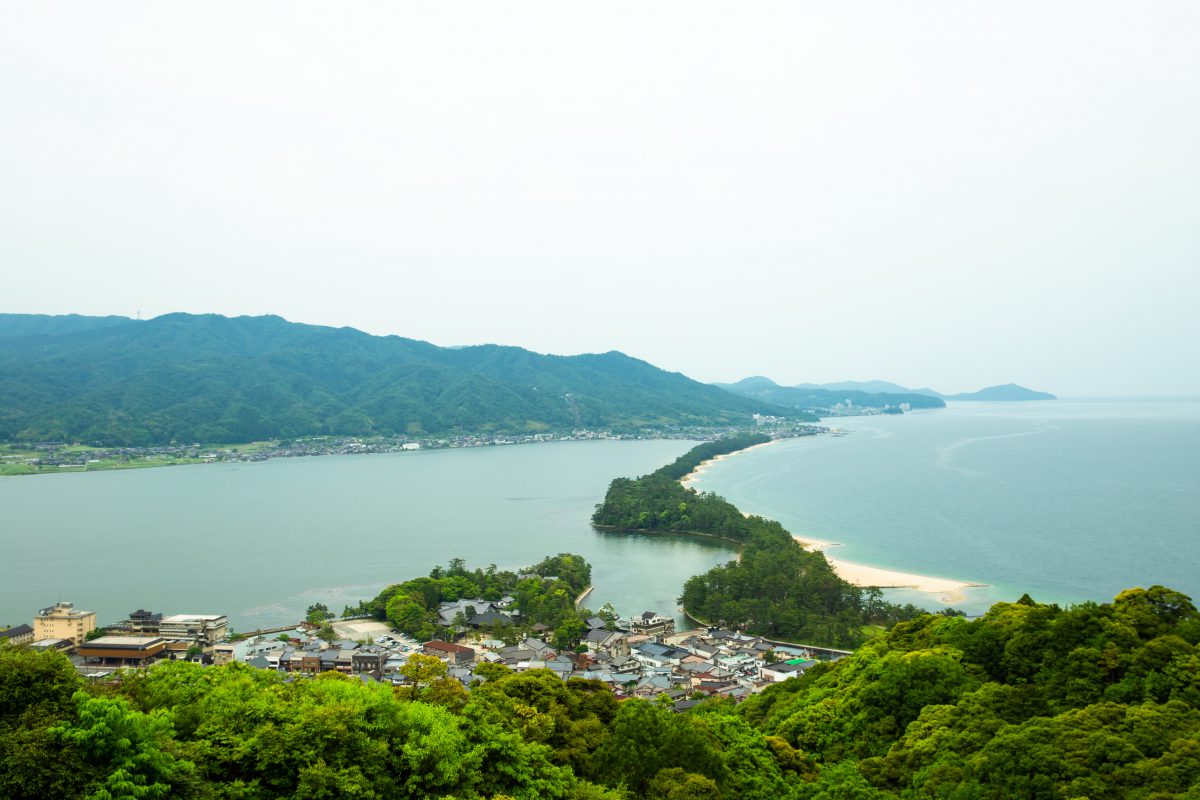
4. The boat houses of Ine
Ine (伊根) is a beach village in northern Kyoto Prefecture’s seaside area. Ine is known for its wooden boathouses, also called ‘funaya’. Ine’s boathouses are known for their distinctive architecture: the bottom floor houses the living quarters, while the second floor houses the boat and fishing gear. The lowest floor is so close to the water that it seems like the houses are floating on the bay.
Ine’s boathouses are classified as a Group of Historic Buildings under Japan’s Historic Preservation Act, and are therefore protected cityscape. Ine is a famous location for filming TV series and movies due to its stunning environment. The scenic area can be enjoyed in several ways. The Ine Bay Cruise, for example, is a popular way to explore the boathouses from the water. You can also go inside the boathouses with a specialized tour, or go around by bicycle to learn about the history of Ine.
Travel time from Kyoto Station: 3h10m by train / 2 hrs by car
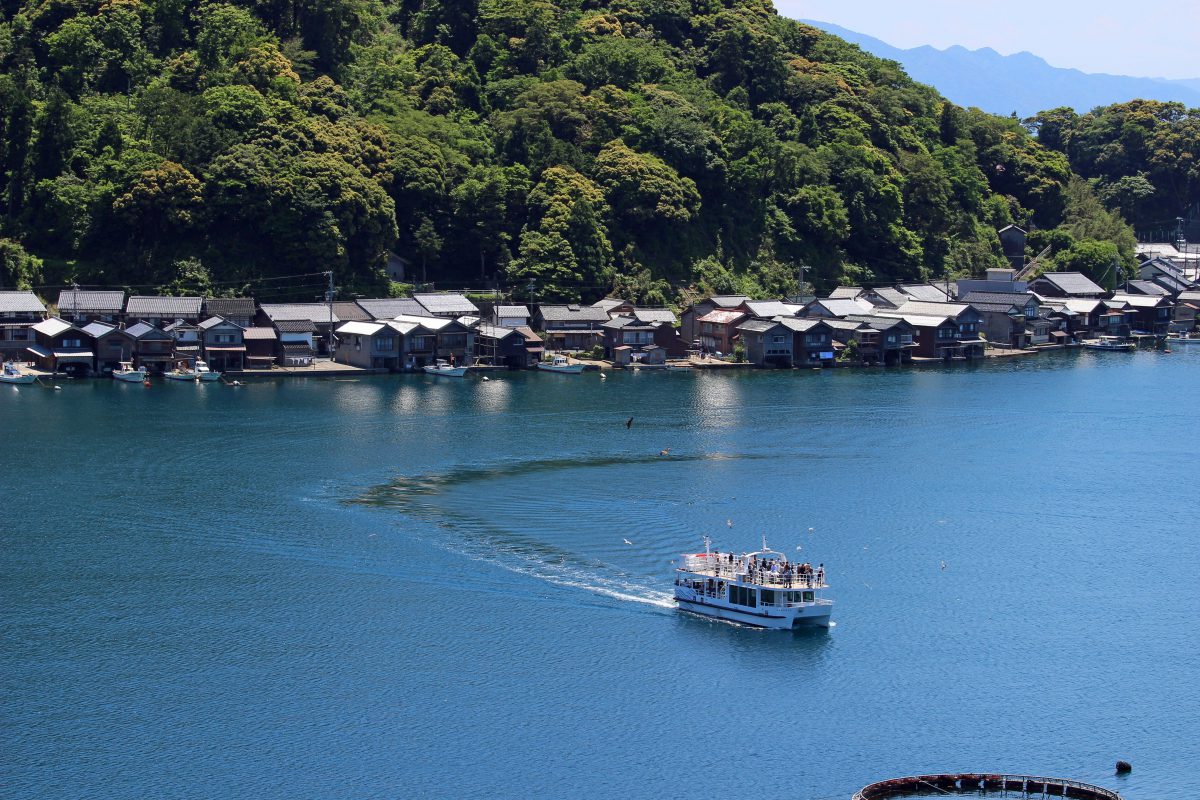

5. Ayabe Onsen hot spring in nature
Ayabe Onsen (綾部温泉) is a natural hot spring town with water that is rich in hot spring minerals that will help your physical and mental relaxation. The town is surrounded by the natural grandeur of the Ayabe Kanbayashi forest. You can find many accommodations that offer amenities such as indoor and outdoor baths, restaurants serving fresh local foods, and activities such as mini golf and tennis.
The Komyo-ji temple (光明寺) is located on a high slope near Ayabe’s woodlands. The mythical Prince Shotoku is claimed to have founded it (572-622). The main Niomon Gate of the temple is of special interest because of its gabled roof with uncommon wood shingles found only in Japan. The temple and gate are located just up the road from Ayabe Onsen and is connected with walking trails. These paths lead to a magnificent chestnut tree that is approximately 2,000 years old.
Travel time from Kyoto Station: 2h15m by train / 1h30m by car
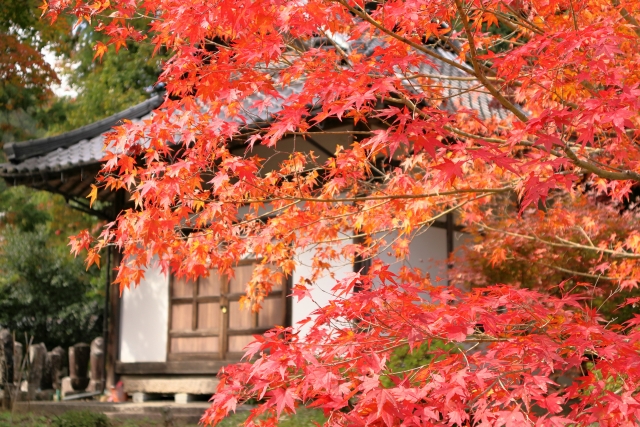
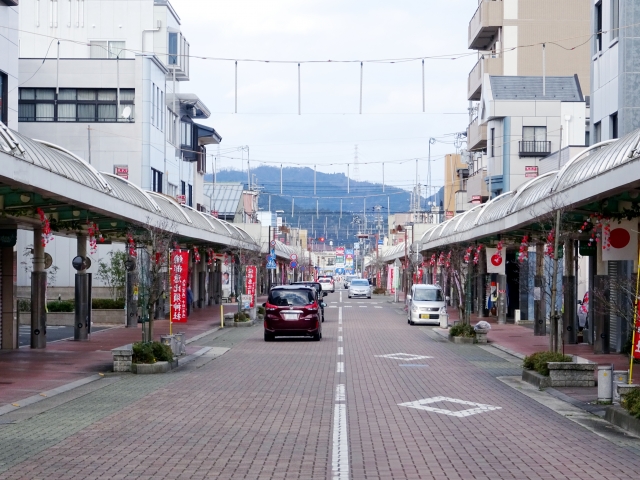
6. A boat ride on the Hozu River
The Hozu River (保津川) has been home to a vibrant and thriving water transportation culture for over a thousand years. Nowadays, you can still enjoy a relaxing river ride during which you can see cool rock formations, fish swimming by in the clear waters, water birds of the area, and traditional boatmen rowing on the river. Because of the geography of the area, the boat ride will be slow in some places while it will be rapid in other spots.
A trip on the Hozu River is great in any season; during the spring, you can see the cherry blossoms with the petals blowing in the wind and floating on the river. In the summer, there are colorful rock azaleas and you can hear the frogs creaking all around you. Autumn brings gorgeous colors in the mountains, and in the winter you can enjoy snowy landscapes from a cozy winter boat. The boarding dock is located north west of Kyoto near Kameoka Station.
Travel time from Kyoto Station: 30 min
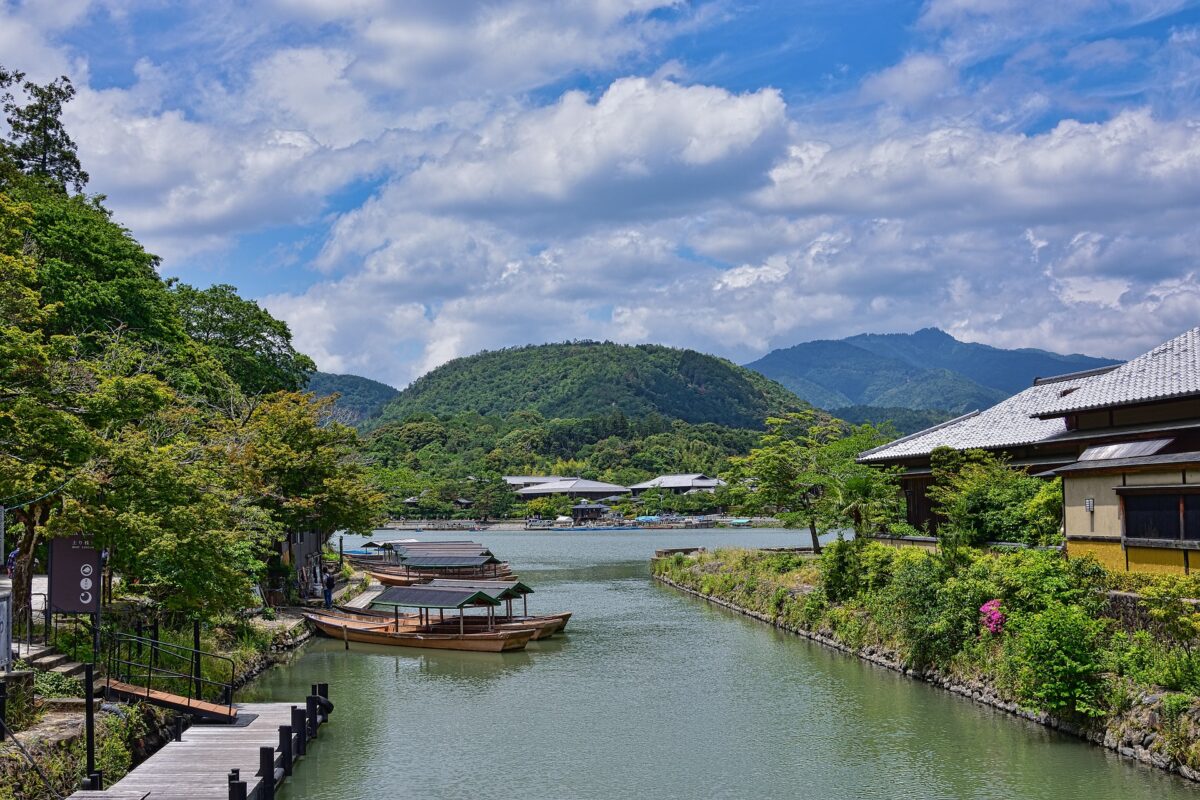
7. A Thatched Village in Nantan’s Miyama district (Kayabuki-no-Sato village)
In Miyama thatched village, Kayabuki-no-Sato (かやぶきの里), visitors can take a step back in time and see rural Japan as it once was. It’s a small and beautiful village located in a steep-sided valley of the Yura River, with thatched roofs on almost every house and locals tending to their gardens and food patches. The houses are all clustered together in a community. These homes with thatched roofs and the rustic nature of the surrounding area provide some very soothing vistas.
A great time to come for a more authentic village ambiance would be in the early morning (before 10 am) or after 3 pm. In the middle of the day it tends to get more crowded with day trippers, so coming earlier or later will give you the best chance of a nice and quiet experience.
Travel time from Kyoto Station: 3 hrs by train / 1.5 hrs by car
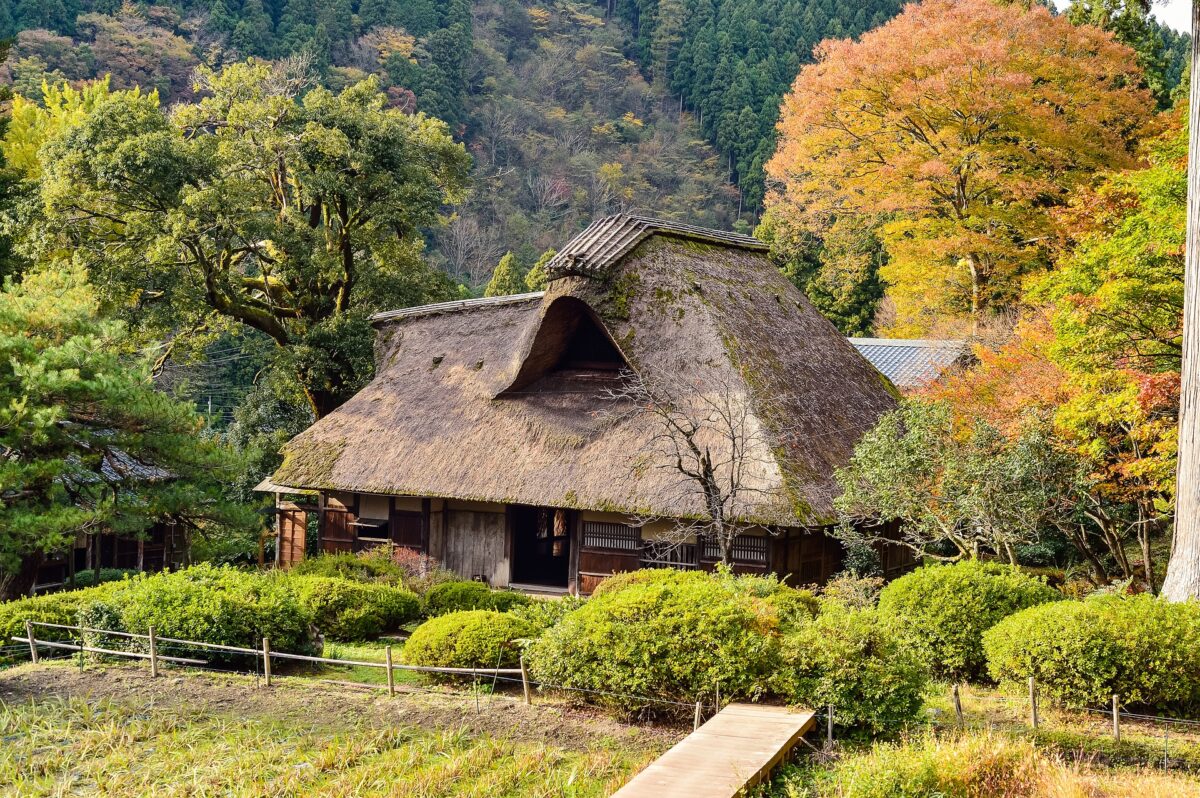
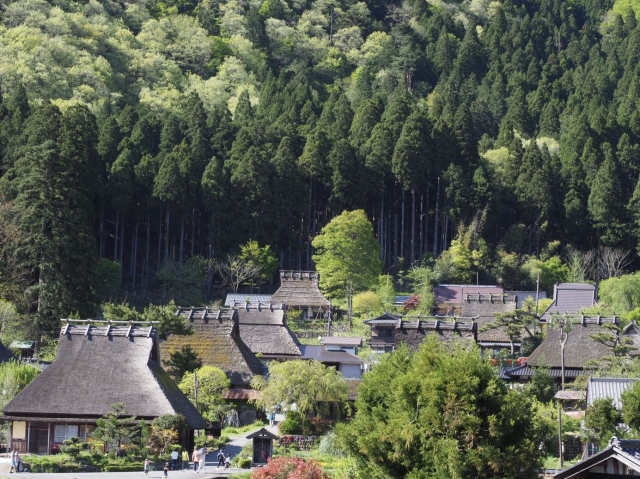
8. Green Tea Fields in Wazuka
Wazuka’s beautiful environment has been shaped by the progress of tea production over the last 800 years. It is so scenic that it was designated as one of Japan’s Heritage Sites in 2015. Wazuka (和束) is one of Uji Tea’s key production areas, accounting for roughly 45 percent of the tea produced in Kyoto Prefecture. Many people are drawn to tea fields for the scenery as well as the tea itself. Tea farmers keep the scenery in good shape.
There are several places of interest that are connected to the area’s history, and of course, you can find amazingly photogenic places to enjoy a tasty cup of locally sourced green tea. Small restaurants serve authentic local cuisine, and for a more in-depth experience you can even opt for an overnight farm stay or home stay.
Travel time from Kyoto Station: 2 hrs by train / 1 hr by car.
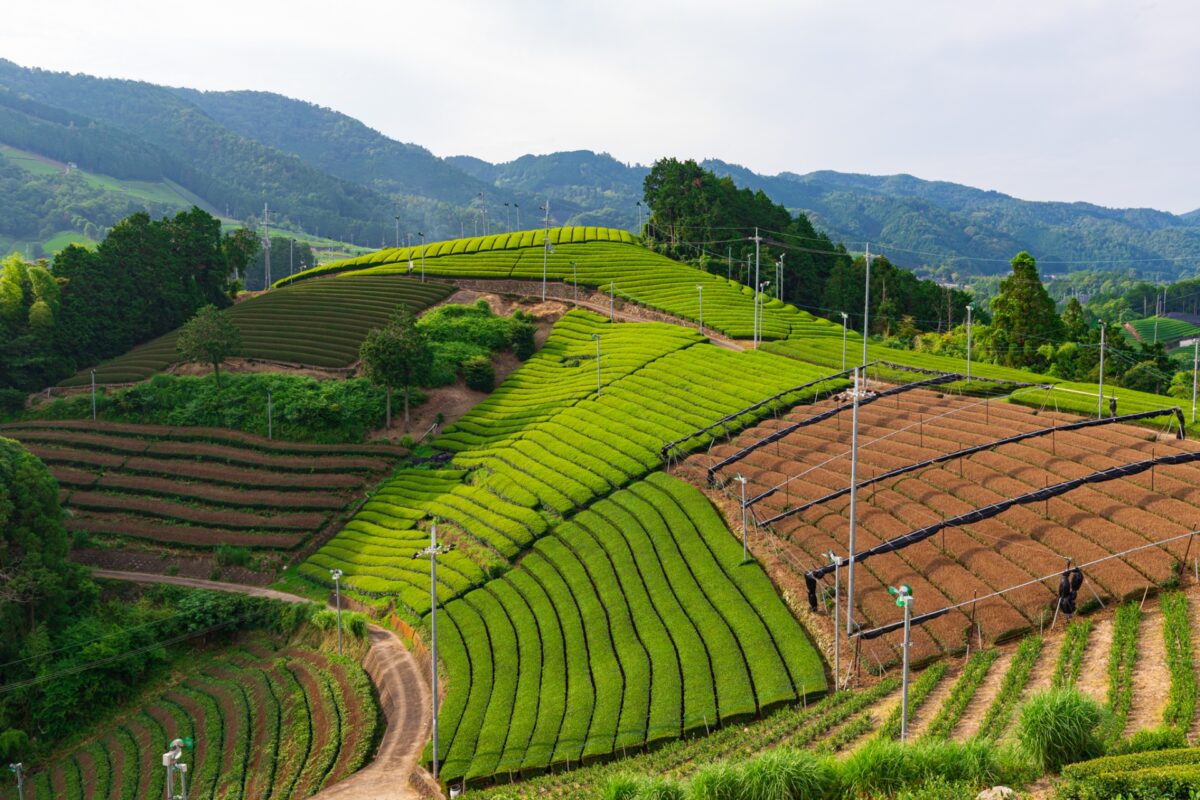
9. Hiking the Yamashiro Kodo
The Kumano Kodo hiking trails in Wakayama might be the most famous walk in the region, but if you are looking for an easier walk, you may want to try the Yamashiro Kodo (山背古道). Only established in 1996 by the nearby cities, the route was created for making the natural, historical, and cultural resources of the Minamiyamashiro area more attractive. The walking path with a total length of about 25 km connects Kyoto and Nara.
In tourist information offices, you can find trail maps that will help you on your way, and point out the spots of interest, events in the area, and learn about local folk stories. There is also an app for the trail (Japanese).
10. Tranquil Temples in Kizugawa
Near Nara in the southern part of Kyoto prefecture is Kizugawa (木津川), which is named after the river that flows through the prefecture. The city doesn’t get that much tourist traffic, making it an ideal place to see some quintessential Japanese sights without the crowds. Because of the area’s strong connection with Buddhism, the main attraction will be the quiet temples.
The Joruri temple has a nice garden that is especially lovely in the autumn with the red maple leaves coloring the temple’s grounds beautifully. The nearby Gansenji temple has an orange 3-story pagoda surrounded by green trees and the tranquil atmosphere will make you feel relaxed. The third temple worth seeing is the Kaiju Senji, which also has a beautiful pagoda. It is a bit of a hike to the top of the hill, but the hilltop location will also give you a wonderful view.
Travel time from Kyoto Station: 45 min
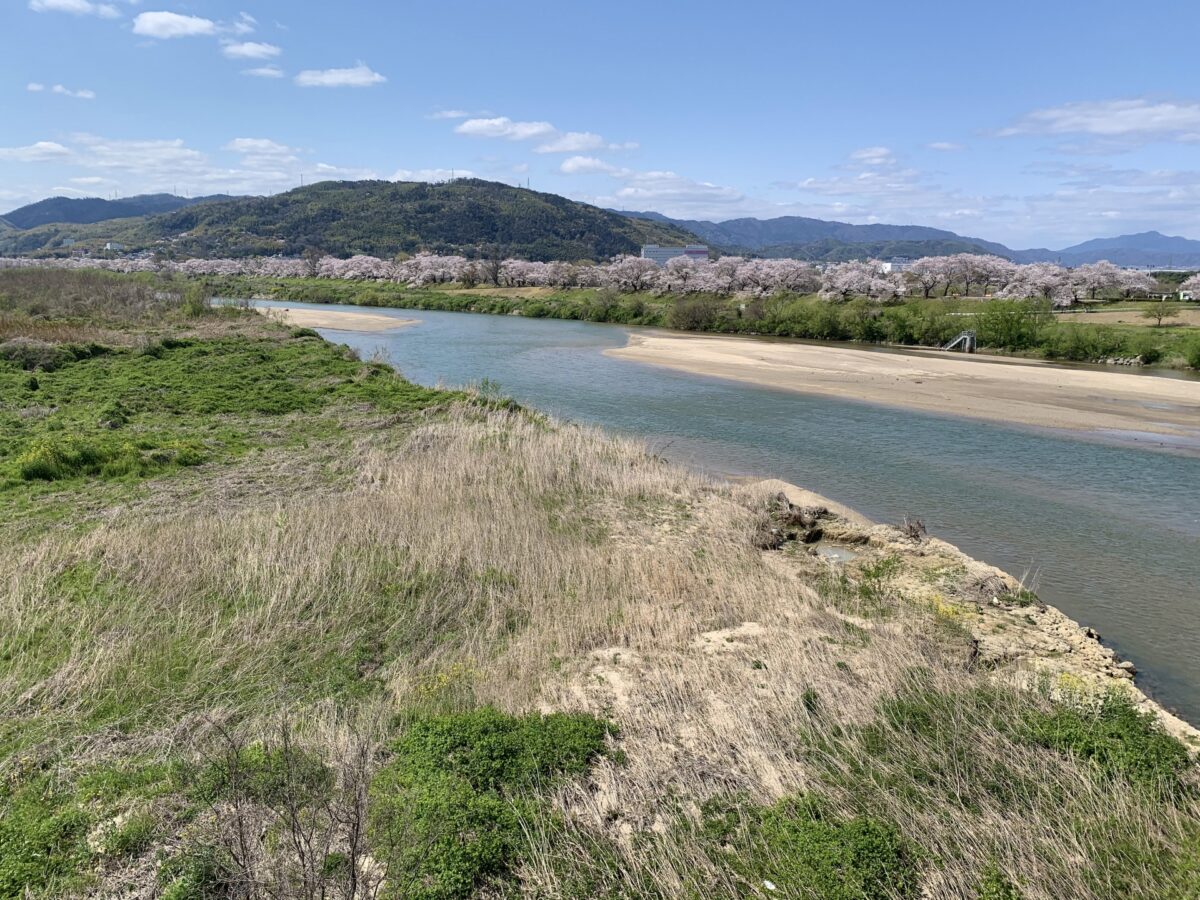
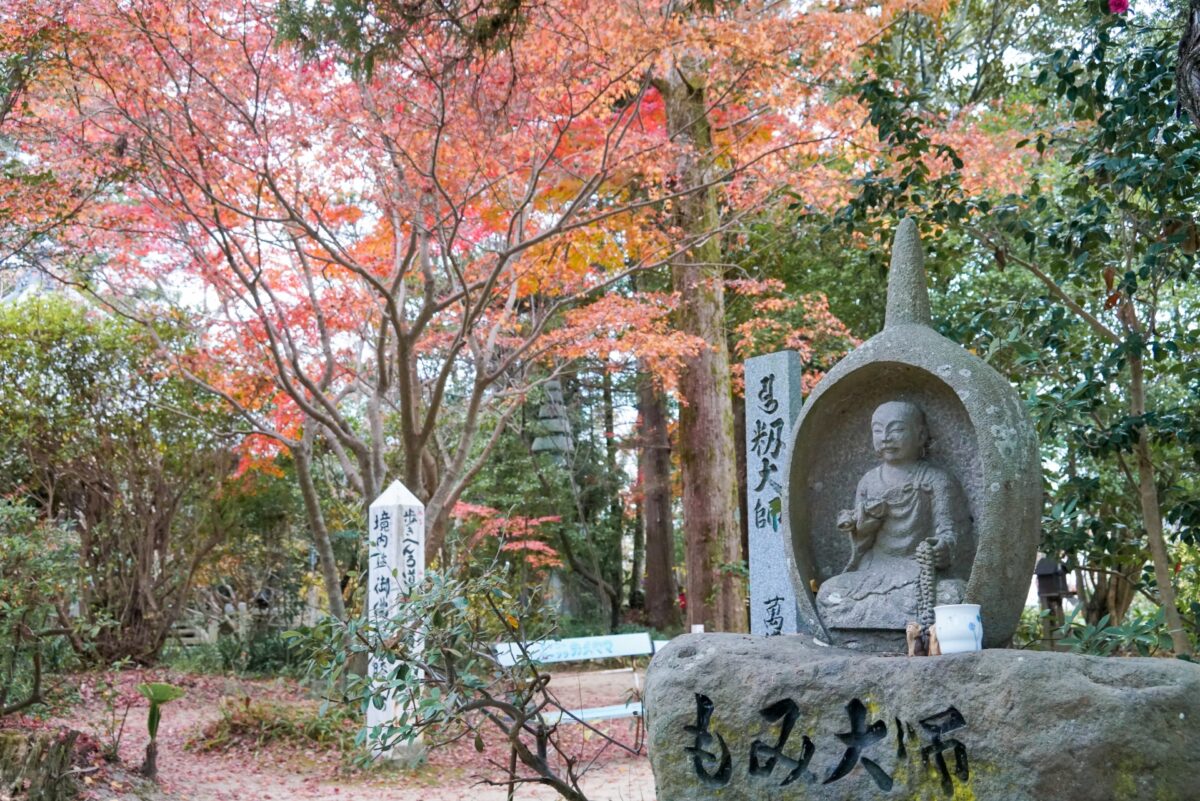
11. Bamboo and Art in Otokuni
Otokuni (乙訓) is famous for its bamboo, just like Arashiyama in Kyoto city. But the good news is that the international crowd hasn’t discovered it yet. In Otokuni, you can enjoy a leisurely walk of 1,800 meters through a rustling bamboo forest in peace and quiet. You can’t just enjoy bamboo by walking among it here, but you can also buy various bamboo souvenirs and even eat delicious bamboo snacks. Nagaokakyo@navi. (name of the store) can be found right next to Hankyu Nishiyama-Tennozan Station.
After enjoying bamboo in its various forms, the Asahi Beer Oyamazaki Villa Museum of Art is another must-see in the Otokuni region. Housed in a charming old villa that was restored to its former glory, you can admire arts like ceramics, crafts, furniture, sculptures, and paintings including some by Monet. The garden is also worth checking out with something in bloom in every season.
Travel time from Kyoto Station: 30 min.
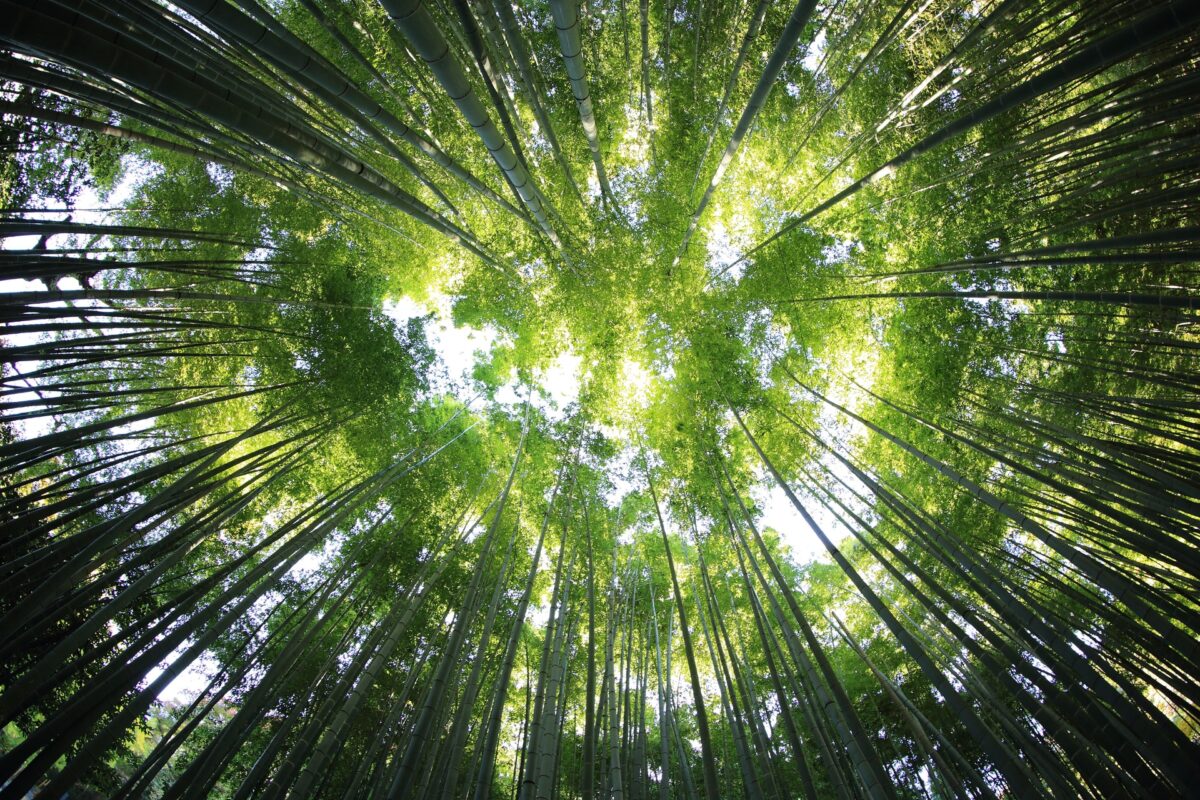

Traveling around Kyoto
As you can see, there is simply so much to do in Kyoto city and its surroundings that it is hard to make the best itinerary to fit your interests that also maximize your limited time. If you’d like to have itinerary planning taken off your hands by an expert local, booking our private tour in Kyoto is a great idea. Besides itinerary planning based on your interests, the guide will also provide you with a wealth of information.
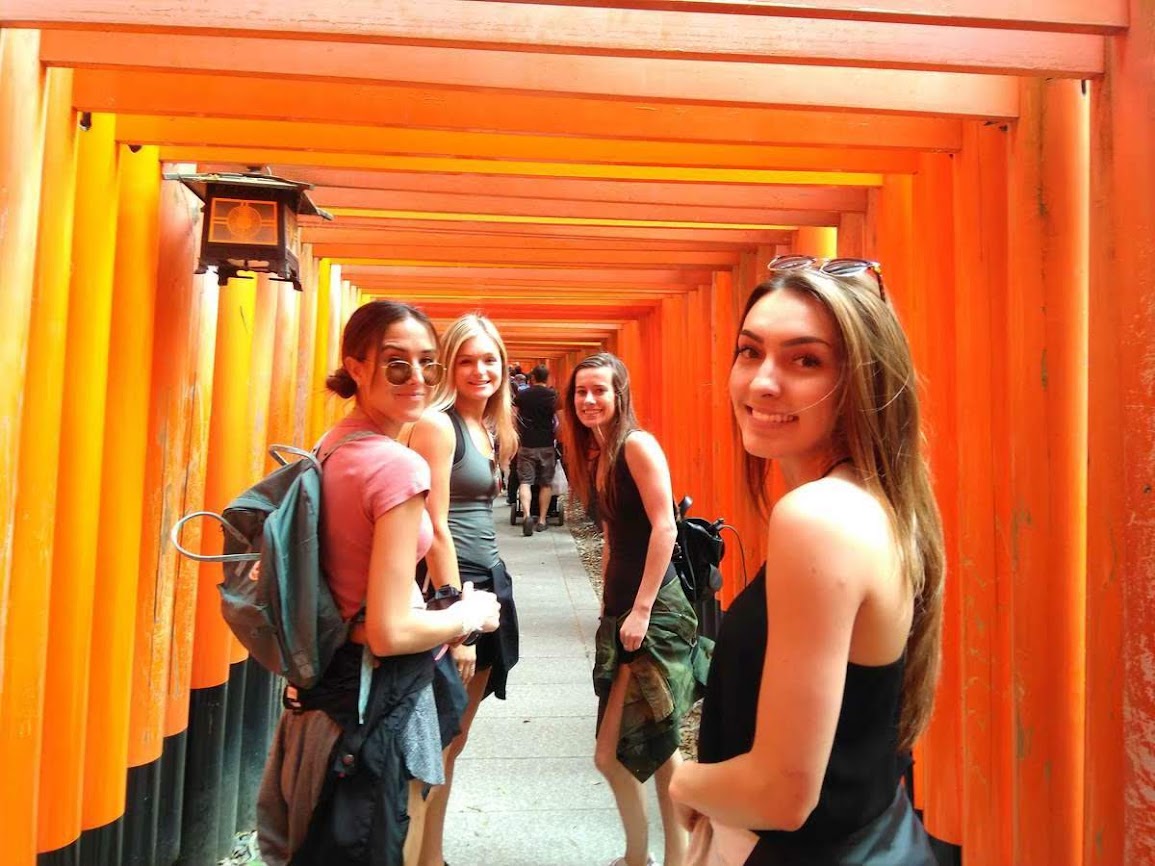
Follow us on Instagram, Facebook, Twitter, and TikTok for more travel inspiration. Or tag us to get featured!
Happy traveling!
Other articles you might enjoy
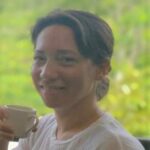
Stefanie Akkerman moved from the Netherlands to Japan in 2013 with her Japanese husband and son. She jumped into the niche of Dutch tour guiding in Tokyo and Kamakura in 2015 and occasionally writes articles about all the great sights and activities Japan has to offer. She loves (Japanese) food, and to work that all off she goes diving, snorkeling, cycling, or hiking.
This post may contain some affiliate links. When you click through and make a purchase we may receive some commission, at no extra costs to you.
